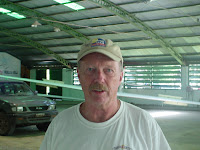WGC2013 report - 19 January
In yesterday's battle between good and evil weather influences, the good won: we wound up with a mostly blue day with thermals that were neither high nor particularly strong, but were consistent enough to produce a good rate of task completions, mostly at reasonable speeds. After a stretch of grim weather, the improvement in mood at WGC2013 was palpable.
US Team pilots all got home, with good scores. In World Class, Tom McKnight had his best day of the contest, a speed that had him just 73 points out of first on a 173-km assigned task. The other classes had area tasks, and there was a wide range of opinion about when to start and which turn areas to exploit. Peter and Phil got it about right, finishing 10th and 11th in Standard class. In Club Class, Sean and Sarah also did well, finishing 8th and 10th.
With a day to go, it's appropriate to look at the races for all classes. In Standard class, multiple world champion Sebastian Kawa (Y) of Poland has surged into the lead with a win yesterday, but Mario Kiessling (AK - Germany), who held the lead much of the contest, is just 42 points back. World Class looks as if it belongs to Argentina: Sebastian Riera (IG) and Jorge Tartara (ST) hold the top two places with a margin over third that, in a class where big point swings at the top are unusual, seems reasonably safe (barring something strange today). In Club Class, Roman Mracek (IF - Czech Republic) has solid 125-point lead over Santiago Berca (SI - Argentina). Sean Franke (VN - USA) stands fifth, with a shot at a podium finish if he can make up 96 points on Tobias Geiger (G4 - Austria) who currently stands third.
We've had a mostly safe contest here at Chaves. The only significant reported damage was to a glider that landed in tall corn after finishing. At this morning's pilot briefing we were told that yesterday two pilots had a mid-air "touch", resulting in no damage. No details were given, but it's easy to believe that this happened in a crowded thermal (of which many have been reported throughout the contest). We hope this relatively good record can continue for one more day - it's worth noting that the final days of a big contest tend to produce a higher-than-average rate of safety issues, as some pilots become willing to take chances they shouldn't in quest of scoresheet gains.
It appears the Argentina flag has been returned, though not yet restored to its pole (lest it disappear again). The FAI flag is still missing, and there is now thought to be some possibility it has fallen in the hands of someone who doesn't understand the rules of WGC flag-stealing (which basically require that all must be returned by the end of the contest).
Today's weather looks promising. We still have light southeast winds, and an area of thick mid-level cloud lurks north of Chaves. But there is lots of sun on the ground, the troublesome cloud looks to be creeping away from us, and the forecast is cautiously favorable. Pilots are in an optimistic mood - the general sense is that we have a somewhat better version of yesterday.
Update at launch time: The sky is full of small cumulus, pilots are reporting good climbs to around 1400 meters, and it seems clear this competition will end on an up note. I'll have a final report when final results are known (probably late this evening).





























